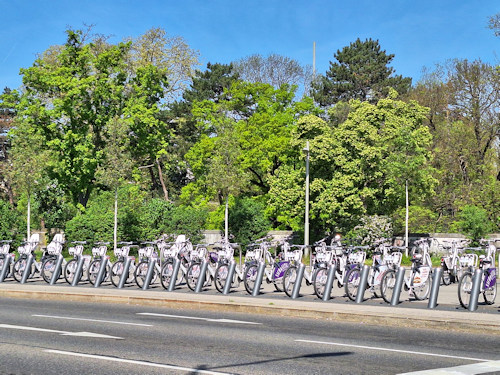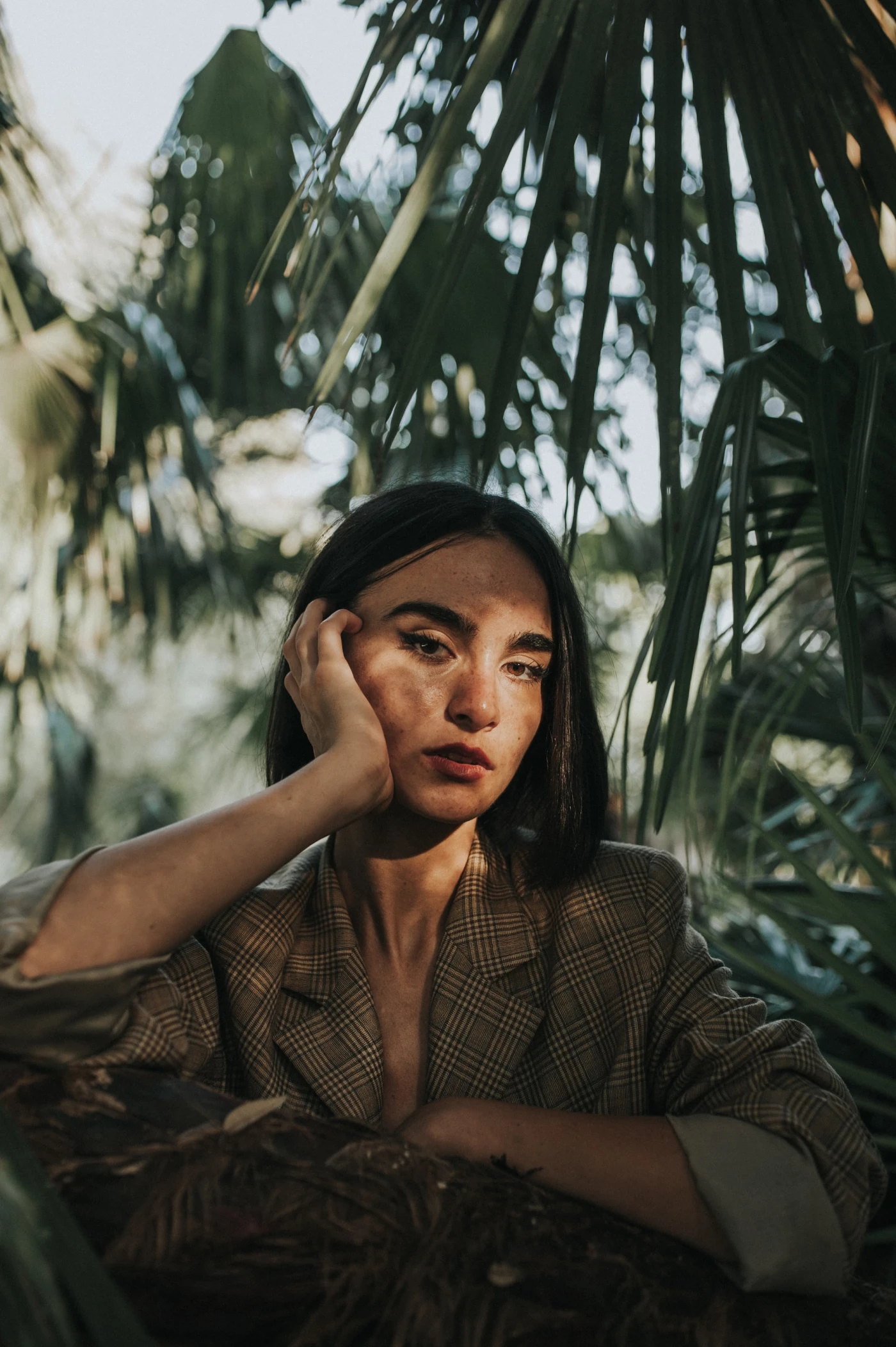How to save time and money

There’s an awful lot to see and do in Vienna, so you don’t want to waste time or spend more than you have to. Here are tips on how to save money and avoid queues in the city.
- Purchase a Vienna Pass sightseeing pass*
- …one-time free entry to dozens of locations
- See also:
- Browse city passes for Vienna
- What to do for free
1. Consider a pass
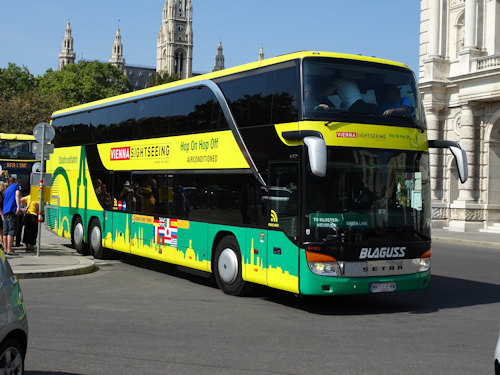
(The hop on, hop off bus included in the Vienna Pass)
1. The Vienna Pass sightseeing pass gives you one-time free entry to museums and similar attractions, plus selected other bonuses like unlimited free sightseeing bus tours. Read my review.
Short summary: can save you plenty if you’re actively going into places for a weekend or longer. Excellent for all the popular sights and art museums. A network travel card is an optional add-on for physical passes.
2. The Vienna City Card is a network travel card for the city that also offers small reductions for a wide range of locations and activities. Read my review.
Short summary: a good choice if you’re only doing a little bit of indoor sightseeing, but plenty of travel, shopping and eating out.
3. The Vienna Flexi PASS offers one-time free entry to a small fixed number of services/attractions.
The choice of eligible locations for you to fill your quota from is not as comprehensive as with the Vienna Pass, but it’s cheaper. More info*.
For a closer look at the different passes, see this overview. Or browse a variety of Vienna card & pass options* at Tiqets.
2. Check for concessions

(Free entry for kids at the Kunsthistorisches Museum)
Don’t forget your student ID or Senior Citizen cards: most attractions offer concessions of one kind or another.
An important tip for those with kids: children get free entry to all federal (i.e. national) museums:
- The Kunsthistorisches Museum group
- Technisches Museum (science and technology)
- Naturhistorisches Museum (natural history)
- National library museums
- Art and/or design museums
- Belvedere
- Albertina
- MAK
- mumok
3. Buy combitickets
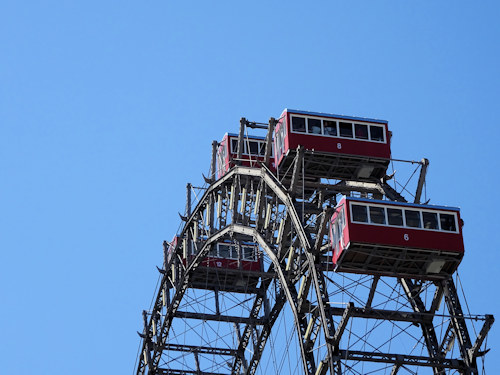
(The Ferris wheel – one of many attractions offering combination tickets)
If you don’t get a pass, but have a particular set of attractions in mind, check if there isn’t a discounted combination ticket available.
For example, an all-inclusive ticket that covers both Stephansdom cathedral and the adjacent Dom Museum. Or a ticket from the Sisi Museum that also gets you into the Furniture Museum and Schönbrunn Palace.
4. Buy in advance (but…)

(Upper Belvedere has a timeslot system)
However you do it, I recommend buying tickets in advance for the most popular attractions unless you’re unsure about committing early.
This is not just to avoid queuing on the day. Some popular attractions – like the light classical concerts designed for visitors – have limited capacities so can sell out by the time you arrive at a ticket counter.
Others work on a timeslot basis so you need to book specific entry times (for example, if you want to see The Kiss or do the Schönbrunn Palace tour).
But…
Alternatively, check theatres and opera houses on the day for returns and consider standing space tickets that are often only put up for sale shortly before a performance.
5. On a very tight budget?
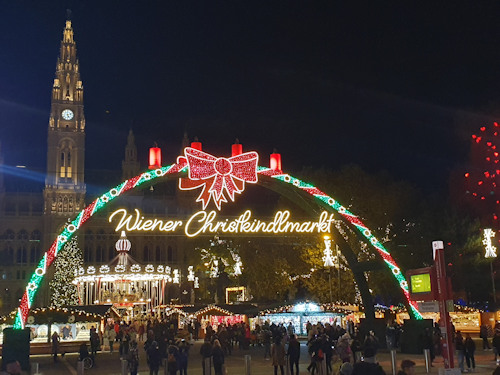
(Many events are free, notably the seasonal markets)
I have a whole article on what to do on a budget, with a long list of free attractions and activities.
For example, if you’re interested in just one or two places, check their websites. It’s not unusual to find special days or evenings when entrance is free for everyone.
Once a year in early October, Vienna also holds the Night of the Museums event, when a single ticket lets you into any participating museum.
Major free events include:
- European Heritage Day (various historic buildings open their doors to the public)
- Open House Wien (ditto, but with a focus on housing, workplaces, and industrial buildings)
- Fest der Freude (free classical concert on Heldenplatz square)
- Summer Night Concert (ditto: this time in Schönbrunn Palace gardens)
- Long Night of the Churches (an evening of activities in Vienna’s churches)
Keep an eye on my events page, too, for numerous free festivals and similar through the year.
The Christmas, Easter and New Year markets, for example, do not normally charge for entry. So you can wander around and at least enjoy the sights and smells for free.
6. Plan your route
Most attractions are central and the transport system is excellent. But the further you have to go between locations, the less time you obviously have for actually sightseeing. So plan your route carefully.
My tip: there are five main clusters of sights, marked on the map:
They don’t cover everything and are pretty rough, but should give you some idea of where most things are. Find a full overview here, but…
- The Hofburg palace cluster: covers the imperial apartments, Spanish riding school, imperial treasury, Albertina museum and staterooms, national library and the beautiful pedestrianized center with Stephansdom cathedral…
- The half-ring cluster: a walk around part of the large boulevard that encircles the old town. It covers Parliament, the Rathaus, the natural history and art history museums, the Stadtpark city park, Heldenplatz square, Staatsoper…
- The Schönbrunn cluster: the summer palace area, including the palace itself, its gardens, the Gloriette, maze, zoo, desert house, palm house, Technical Museum…
- The Belvedere cluster: the upper and lower palaces, gardens, nearby galleries, botanic garden, Karlskirche church, the fountain and Russian memorial at Schwarzenbergplatz…
- The Prater cluster: the park, the entertainment complex, Madame Tussaud and the Riesenrad giant ferris wheel…
7. Buy a network travel pass

(Public transport in Vienna is inexpensive)
If you’re planning to travel around on that excellent public transport system, get a network travel pass. They represent extremely good value for money and the public subways, buses, trams and city trains are clean, fast, on time (usually), frequent and get you just about anywhere you’re likely to want to go.
N.B. As mentioned, the Vienna Pass has an optional network travel card function.
8. Time your arrival
Needless to say, always get to the busiest locations when they open. This advice applies particularly to:
- Schönbrunn Palace: probably the most popular tourist attraction in Vienna. Get there before the building opens and you can take photos of the palace and grounds without people to spoil the view.
- Upper Belvedere Palace: home to Gustav Klimt’s The Kiss painting and other masterpieces of art.
- Popular coffee houses like Café Central or Café Sacher. If you haven’t reserved a table, expect queues…except very early in the morning
Or – as suggested earlier – simply book tours etc. with limited capacities in advance (like morning training at the Spanish Riding School).
You might also like this article on the best time to visit Vienna.
9. More ways to save money…
Finally, just a few very specific tips…
- Many attractions sell the famous Mozart balls and other marzipan chocolates as souvenirs. The everyday supermarkets like Billa and Spar stock the same chocolates and packaging for a fraction of the price
- These same supermarkets are cheaper than you might expect for a capital city in a rich country. Pop in for drinks and takeaway snacks
- The Christmas markets have numerous unique, handcrafted items. But buy your bulk decorations from the department stores, especially immediately after Christmas (when the sales start)
- Look out for breakfast options in one of the magnificent coffee houses that include a hot beverage; the cost of upgrading from “coffee only” to “coffee plus breakfast” is often surprisingly small
- Check ticket agencies like Tiqets* for temporary discounts, specials or bundle pricing



